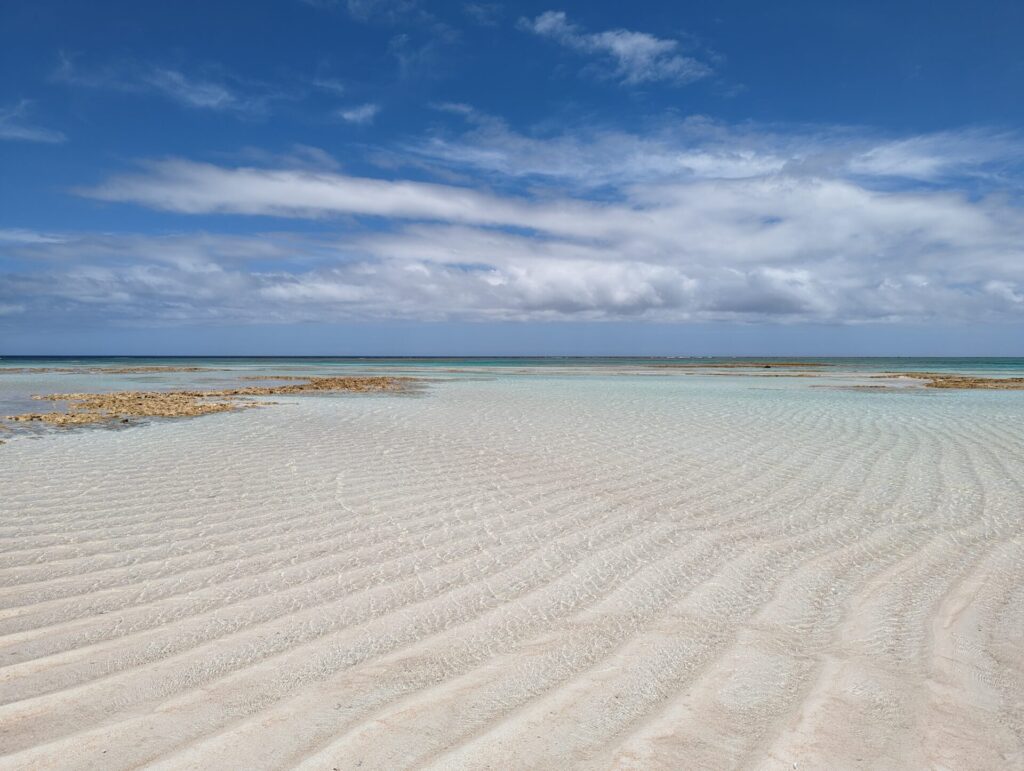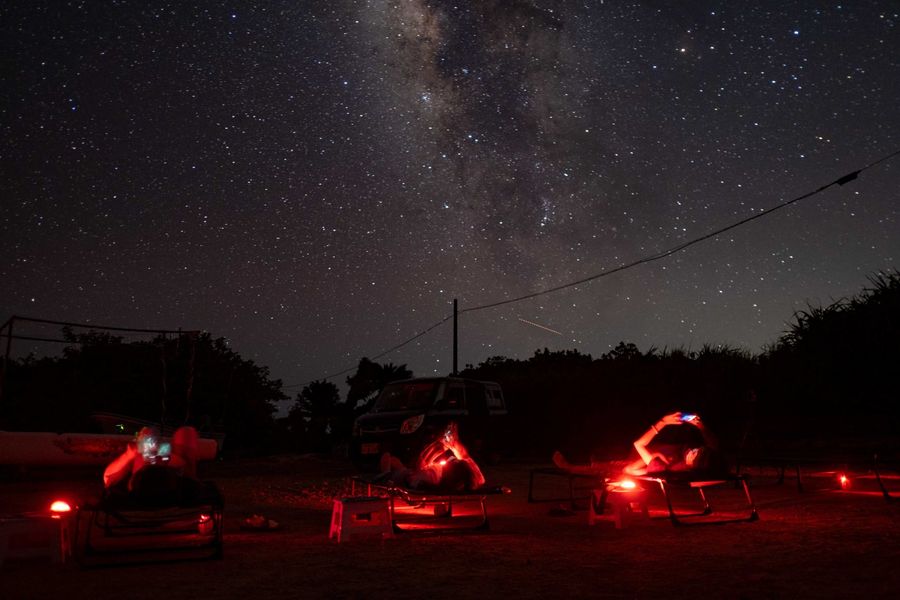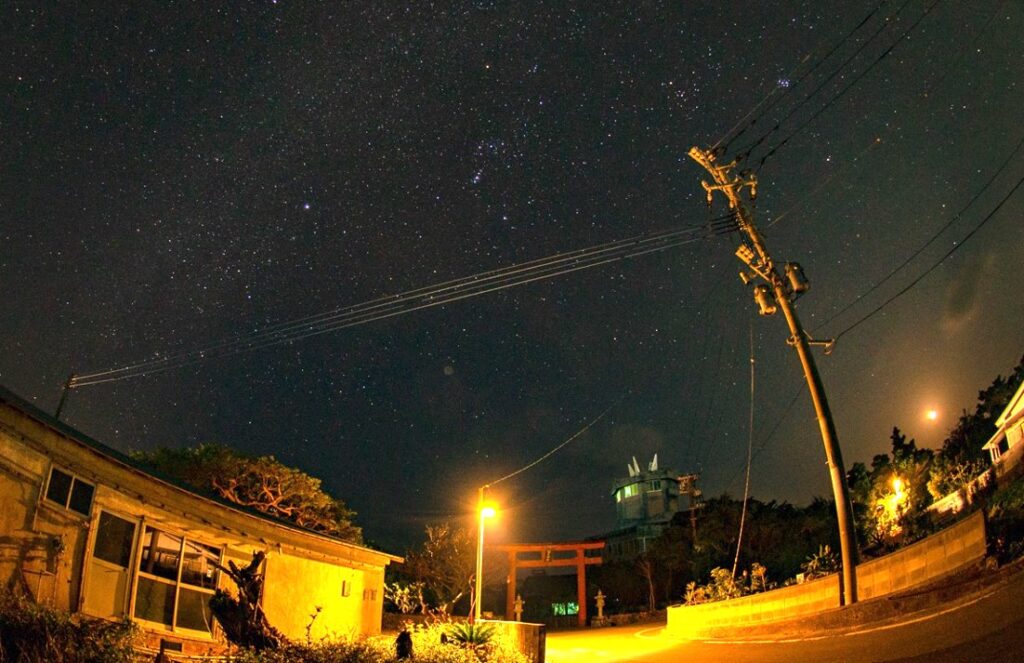Yoron Island, located on the border between Kagoshima and Okinawa Prefectures in Japan, is surrounded by coral reefs. It has a population of approximately 5,000 inhabitants and an area of 20.58 km2.

Yoron Island has a history of tourism development since the postwar period. Since the mid-1960s, the island has garnered much interest, especially from urban youth, who enjoy Sun, Sand and Sea (so-called ‘3S’). The number of tourists on the island increased from 7,994 in 1964 to 150,387 in 1978, and it became crowded with youth from cities. However, with more tourists visiting the island, tourism has had several social impacts as well. For example, water was often cut off because of excessive use by hotels, according to an inhabitant of the island. Since then, due to the tourism industry’s growth and development in Okinawa Prefecture and the low cost of overseas travel, the number of tourists is about half of 1987, reaching 70,000 .
Today, Yoron Island establishes tourism policies aimed at ‘sustainable development’ rather than ‘growth.’ This is because it experienced the negative effects of mass tourism. To tackle these issues, the island cannot accept any more tourists due to the lack of human resources. Consequently, the island has shifted its focus to astrotourism developemnt, which uses dark skies as a tourism resource (see Green Destinations website).
In 2019, Yoron Island signed a partnership agreement with the Faculty of Tourism of Wakayama University to launch astrotourism developemnt.

Socio–Economic Sustainability
The island sustains itself economically by creating a night-time economy through astrotourism. The introduction of astrotourism brought new jobs and income opportunities to the island along with more options for nighttime attractions. Currently, about ten operators offer astro-tours on Yoron Island. Mr. Yasuhiro Hashimoto, who conducts charter-only tours, makes his living solely from astro-tours. His tour is very popular, as he flexibly changes the contents to meet tourists’ needs. ‘I want to let everyone know that you can make a living just from dark skies,’ says Mr. Yasu.
Astronomical guides on the island are generated by the students at Wakayama University and serve as ‘the qualification system for the Astronomy Guide (the System)’ after their graduation. The system is a training course for star guides conducted in Japan. The program comprises two levels: ‘Star Sommelier’ and ‘Associate Star Sommelier.’ To reach the former level, one must have practical experience in touring. So far, four courses have been held on Yoron Island (instructor: Masami Okyudo), and 78 people (Star Sommelier: 4, Associate Star Sommelier: 74) have obtained the qualification. This is about 1.5% of the population. Mr. Motozono Hideyuki, a Star Sommelier who conducts marine tours during the daytime, said, “You often encounter dangers in the ocean, but no one gets hurt looking at dark skies. In my retirement, I want to spend my life just gazing at the stars.” The provision of specialized courses in astronomy generates new socio-economic benefits and helps them find a sense of purpose in their lives.

Environmental Sustainability
One aspect of environmental sustainability is our commitment to preventing light pollution. Yoron Island practices two main initiatives. The first is the designation of ‘the Model Area for Preserving Dark Skies (the Model Area).’ Since March 2021, we are in the process of switching to security lights that meet the standards set by DarkSky International. While making the switch, the manufacturer of security lights failed to sell the ones that are light-pollution-resistant. Therefore, we fabricated to change the mounting fixtures to be horizontally made. Additionally, the upward light leakage was cut by shielding the photometric parts with an aluminum film. The area within a 500m radius of the Gusuku and Riccho districts has been designated as the model area and most of the lights have been replaced. These efforts have created a space where security lights and beautiful starry skies coexist.

The second initiative is monitoring light pollution. In Yoron Island, a SQM-LE (Sky Quality Meter) is installed in the inner city, the Model Area, and the eastern part of the island to measure night sky brightness (NSB). SQM can continuously quantify the magnitude per square arcsecond (mag/arcsec2) at a constant point. Despite a few disadvantages, it is the most used instrument to measure NSB because of its low cost and the simplicity to quantify. Although there are challenges in processing data to detect precise values, such as the scattering of light pollution by clouds and analysis of the effects of the Milky Way brightness, installing SQM has made it possible to monitor the level of environmental change caused by artificial lighting. You can upload observation data on CSV file below.
The installation of more security lights is an emerging issue on the island. Our survey revealed that more than 600 security lights have been installed on the island. Replacing all of these would be enormously expensive, and it is difficult to obtain agreement from the residents. Another issue is the electric cultivation of flowers and sports activities using nighttime facilities that are visible in the satellite pictures as light pollution. It is necessary to solve these issues in the future while considering the social lives of the inhabitants.
Socio-Cultural Sustainability
The socio-cultural sustainability aspect involves two initiatives. We regularly conduct astronomical programs for islanders such as stargazing events for the local children. Those courses are often organized by students of the system. For example, a course combining stargazing and picture book reading is held by some qualified library staff. Additionally, we also offered the residents an observation program for the partial solar eclipse that occurred in 2020 . Offering astronomy education programs for islanders allows them to positively participate in astrotourism development.

Furthermore, we refer to the inheritance of astronomical folklore through AT. Back when clocks or GPS were unavailable, the locals fished and farmed depending on the movement of the celestial bodies. An individual in his 90s vividly remembers the time and direction in which the Pleiades (Buri-Bushi) and the Orion Belt (Michi-Bushi) appeared, and he often caught squid when these celestial bodies were visible from the horizon. There are several folk songs on Yoron Island with lyrics relating to astronomy. We have transcribed the songs collected during the interview (Figure 4) and encourage tour operators to actively use these cultural resources. As dialects and cultures are being lost, we seek ways to pass on the culture through astrotourism.

